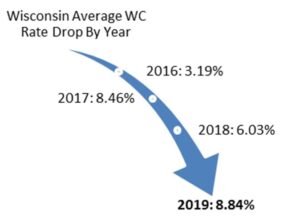Claims conversations 2023: Andrew Leeds, Plymouth Rock Assurance

Return to claims conversations homepage
What’s your top priority in the claims department this year?
Most of our challenges are overcome by having the right staffing – being able to meet all those challenges with the right people who are talented, well-trained, and tenured. So for us, it’s about attracting talent, training them, and then getting proficient at their roles. It our biggest leverage solving the other problems – increased claims cycle times, inflation, those types of things.
Andrew Leeds
Where are you looking to hire staff? Is it just adjusters?
Core answer is yes, absolutely. But the next most important hires are analytics and data folks. They can help us identify opportunities within the claim adjusting process to either be more accurate, more efficient, or provide better customer service. At Plymouth Rock we have people dedicated to the claims organization focused on data analysis. But they’re also part of a larger ecosystem of data folks.
Cycle time is getting longer because of external factors. How are you factoring those into your internal metrics?
For us, it’s being that feedback loop into the product organization to say, “Here’s what we’re seeing on real time pricing, in labor and materials, in different inflation rates. They can bring that into their analysis of how much we need to be charging on each and every policy. It’s us providing that real time feedback to say, “Hey, there material shortages out there, and on this subset of our claims we can expect instead of seeing 30 day cycle times, we’re gonna see 45, 60, 90 days, and that’s going to cost us X amount more.
What about your tech strategy overall?
In the home space, I think the waters are relatively untested. We’ve been trailing the auto claims organization. They’ve bought automation around photographic estimating, and customer journeys and apps and things that, in the home space, hasn’t been explored. The things that we’re looking at from a home perspective is expediting that front end of the claim. If you rewind about 10 years ago, home carriers probably had 10% of their claims adjusted by remote or virtual adjusters sitting at a desk. And as we moved into COVID, that dynamic almost completely flipped. That helped carriers kind of wrap their arms around the fact that we can do this somewhat effectively. Now, it’s figuring out where the edges of the map are, so to speak. Technologies like augmented reality measurement, that help us do Interior measurements in rooms with customer assistance, or using photographic information to tell us what materials are there, or what contents are there.



